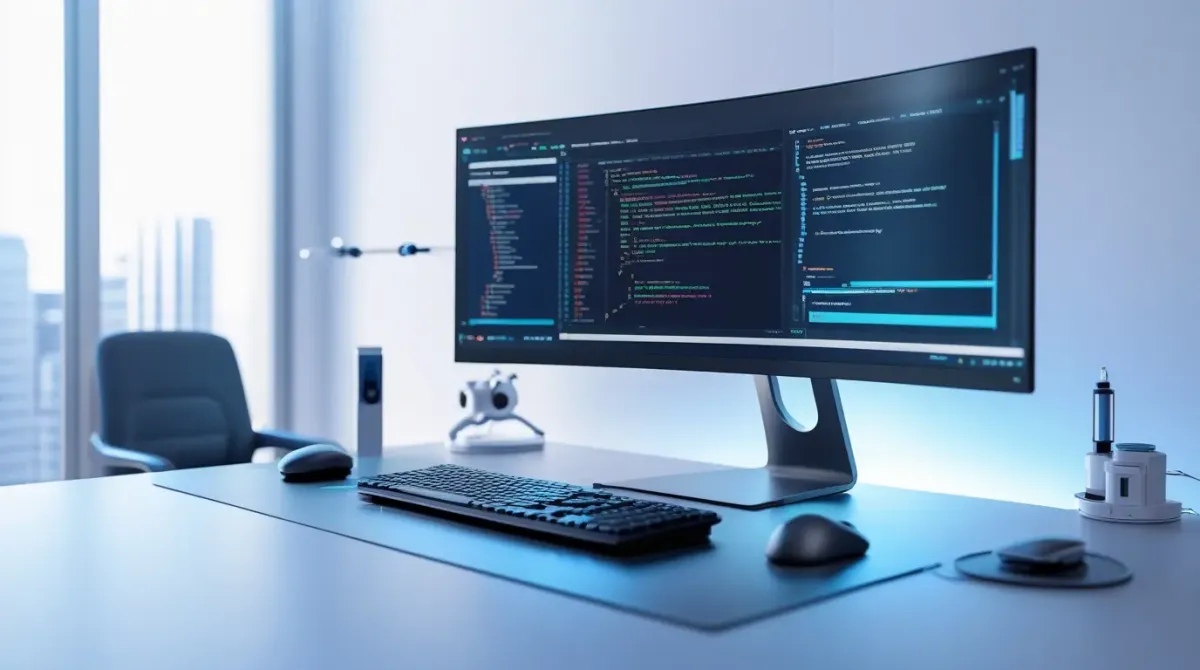Whether you’re a researcher, developer, or hobbyist, building your own AI workstation can save money, provide flexibility, and ensure your hardware is optimized for your specific workloads. This comprehensive guide covers everything you need to know about building the perfect AI rig in 2025.
🚀 Quick Navigation:
GPU
Core of Your Rig
The GPU is absolutely king when it comes to AI workloads. Your GPU choice will determine 80% of your system’s AI performance.
💡 Haven’t chosen a GPU yet? Check out our comprehensive GPUs for Deep Learning 2025 guide or browse our GPU recommendations page.
Top GPU Picks for 2025
🏆 Prosumer Champion
NVIDIA RTX 5090
32GB VRAM, exceptional performance for researchers and developers
✓ Best single-GPU option🔬 Enterprise Grade
NVIDIA H100 NVL
Workstation variant for labs and small HPC setups
✓ Professional workloads💰 Budget-Friendly
Intel Arc Pro A60/A40
Good FP16/BF16 support at lower cost
✓ Entry-level builds🚀 Alternative Power
AMD MI300X Dev Kits
192GB HBM3, strong in FP16/BF16 workloads
✓ Specialized applications💡 Pro Tip: Always balance GPU performance with VRAM size. For training large models, 24GB+ VRAM is becoming the new baseline in 2025.
CPU
Don’t Bottleneck the Beast
While the CPU doesn’t need to be extreme, it must handle data preprocessing, multi-GPU coordination, and system orchestration without becoming a bottleneck.
CPU Recommendations by Use Case
| CPU | Cores/Threads | Best For | Price Range |
|---|---|---|---|
AMD Threadripper 9980X 64 PCIe 5.0 lanes | 32C/64T | Multi-GPU rigs, HPC workloads | $5,000+ |
AMD Threadripper 9960X Excellent multi-GPU support | 24C/48T | Workstation builds, multi-GPU | $3,500+ |
AMD Ryzen 9 9950X Great price/performance | 16C/32T | Single-GPU builds, enthusiasts | $700 |
Motherboard
PCIe Lanes Matter
Your motherboard determines how many GPUs you can install and how they communicate with the CPU.
Single GPU Systems
Any modern ATX board with PCIe 5.0 x16 slot works perfectly
Multi-GPU Systems
Workstation/server boards with multiple PCIe 5.0 x16 slots required
Key Motherboard Features for AI Workstations
PCIe 5.0 Support
Essential for maximum GPU bandwidth
Bifurcation Support
Split one x16 slot into multiple x8 slots (with performance trade-offs)
ECC Memory Support
Optional but valuable for long training runs
Memory
(RAM) — Feed the GPUs
Deep learning is RAM-hungry when datasets are preloaded, augmented, or when running multiple training processes simultaneously.
RAM Configuration Guidelines
Minimum for AI workstations, handles most single-GPU workflows
Ideal for large datasets, multi-GPU setups, and heavy preprocessing
For production systems and maximum reliability
Storage
Fast Data = Faster Training
Model training is I/O intensive. Your storage setup can become a significant bottleneck if not properly configured.
Storage Hierarchy for AI Workstations
Primary Drive (OS + Active Data)
2-4 TB NVMe Gen4/Gen5 SSD
Store OS, current projects, and frequently accessed datasets
Secondary Storage (Archive)
8-16 TB SATA SSDs or Enterprise HDDs
Store completed models, backup datasets, and archival data
Enterprise Setup (Optional)
NVMe RAID 0 Arrays
For streaming massive datasets at scale (10GB/s+ throughput)
Power Supply (PSU)
Modern GPUs are power-hungry beasts. A quality PSU is not optional—it’s critical for system stability and component longevity.
PSU Sizing Guide
Single GPU Builds
Multi-GPU Builds
⚠️ Important: Always buy from reputable brands (Seasonic, Corsair, Supermicro, EVGA). A failing PSU can damage your entire system.
Cooling
AI workloads run 24/7 under full load. Proper cooling ensures sustained performance and component longevity.
Cooling Strategy by Component
🖥️ CPU Cooling
Air Cooling
Suitable for lower-core CPUs with good case airflow
- • Noctua NH-U12A (mid-range)
- • be quiet! Dark Rock Pro 4
AIO Liquid Cooling
Recommended for high-core CPUs (Threadripper/Xeon)
- • Arctic Liquid Freezer II 360
- • Corsair H150i Elite Capellix
🎮 GPU Cooling
Single GPU
Open-air cards work well with proper case ventilation
Multi-GPU
Reference blower GPUs prevent heat buildup between cards
Sample Builds
Student/Enthusiast Build
~$4,000Professional Researcher
~$8,000Enterprise Multi-GPU
~$25,000Prebuilt vs. DIY
Choose Your Path
🔧 DIY Build
🏪 Prebuilt System
🔗 Need More Options? Check out our curated Systems page for recommended builds and preconfigured workstations from trusted vendors.
Final Thoughts
Building Your AI Workstation: Key Takeaways
💡 Essential Principles
GPU First: Choose your GPU, then build around it
Balance Components: Avoid bottlenecks in CPU, RAM, or storage
Plan for Growth: Leave room for more VRAM and PCIe lanes
Cooling Matters: 24/7 workloads demand serious thermal management
🚀 2025 Trends
VRAM is King: 24GB+ becoming standard for serious work
DDR5 Standard: 64GB+ RAM configurations are the norm
PCIe 5.0 Adoption: Maximum bandwidth for next-gen GPUs
Power Efficiency: Modern PSUs with better efficiency curves
Building an AI workstation in 2025 is about smart component selection and system balance. Your GPU choice sets the foundation, but the surrounding components ensure stability, performance, and longevity.
Ready to Build Your AI Rig?
Need help deciding? Our curated recommendations take the guesswork out of component selection.
